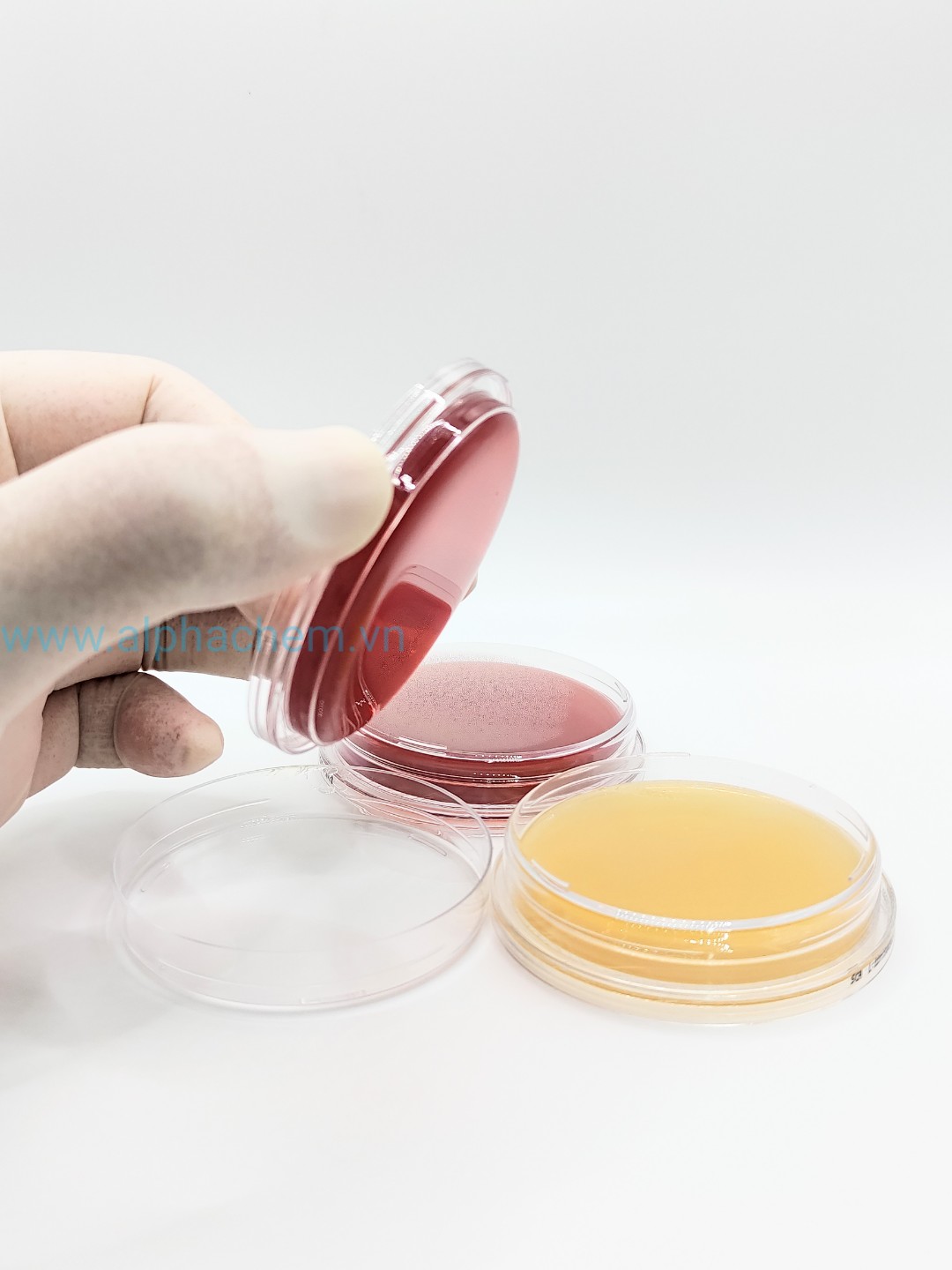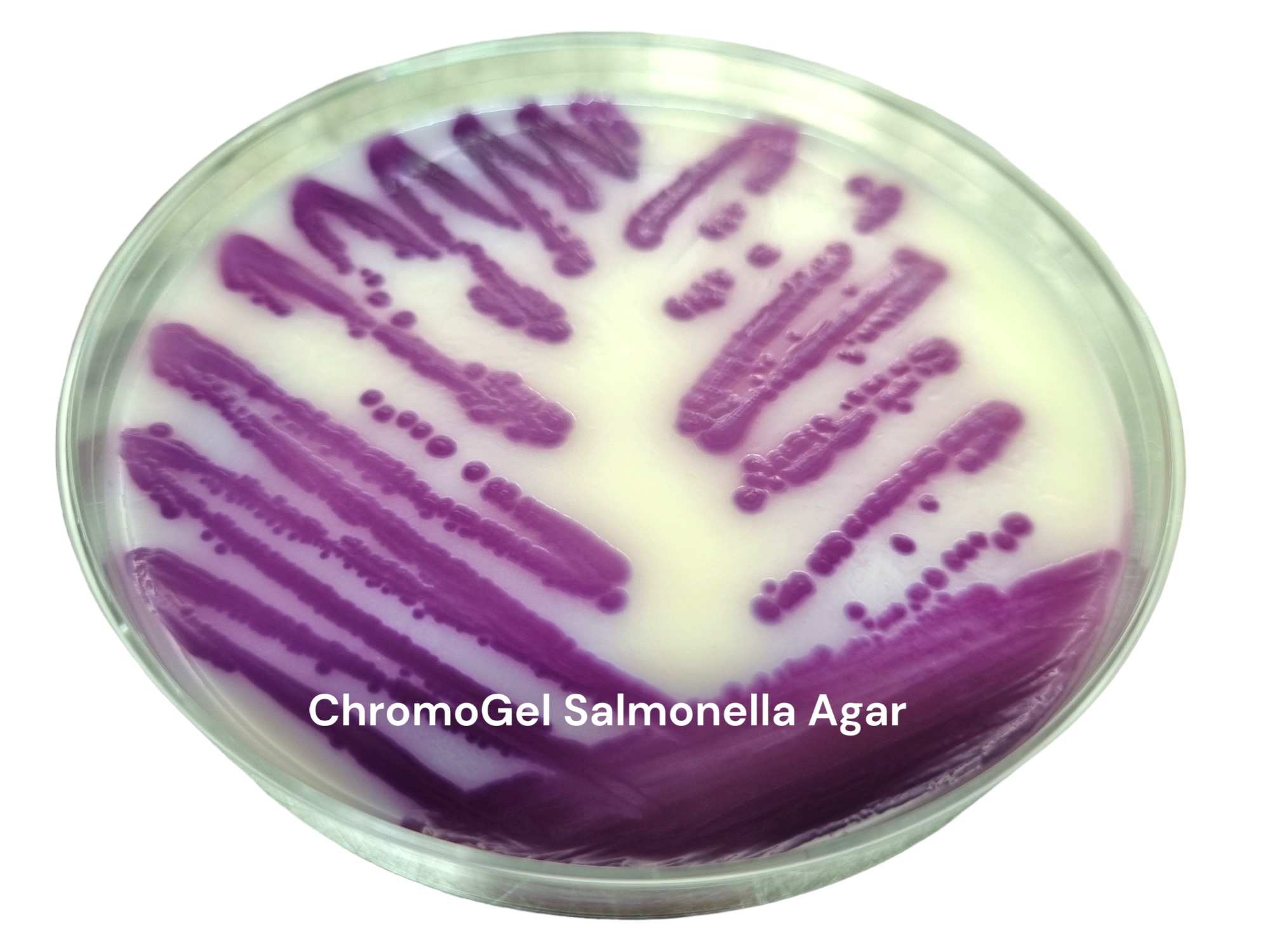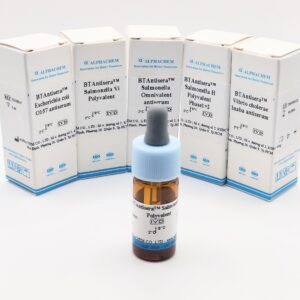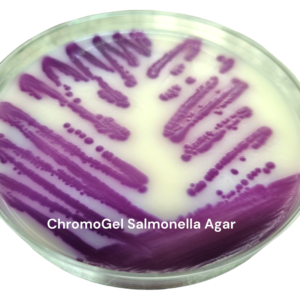BTAntiseraTM Shigella antisera
Intended Use
Liquid stable antisera for the determination of O antigens for the serological identification of organisms belonging to the genus Shigella
Summary and Explanation
Shigella spp. cause classic bacillary dysentery characterised by abdominal pain, fever, large volumes of watery stools and later, smaller volumes of stools containing blood , mucus and many leucocytes. Shigella dysenteriae can cause a severe form of dysentery that has a reported fatality rate of up to 20%. Shigella spp. and E. coli are closely related taxonomically and are often difficult to differentiate on the basis of biochemical tests; serological cross-reactivity is also high. Consequently full identification relies on appearance on selective agars, biochemical profile and reactivity with specific antisera.
Principle
Initial serogrouping can be achieved by the use of polyvalent antiserum followed by specific monovalent antiserum to determine the serotype. Identification is achieved when whole organism is mixed with antiserum and agglutination or clumping occurs.
Formulation
Antisera are prepared from rabbits immunised with standard reference strains according to recognised international standards. Antisera are adsorbed to remove cross reactions. The antisera contain <0.1% sodium azide as a preservative.
Warnings and precautions
Observe approved biohazard precautions and aseptic techniques. To be used only by adequately trained and qualified laboratory personnel. Sterilise all biohazard waste before disposal. Sodium azide preservative may be toxic if ingested and may react with lead and copper plumbing to form highly explosive salts. Always dispose of by flushing to drain with plenty of water. Refer to Product Safety Data sheet.
Contents: See pack label
Stability and storage
Store unopened at 2-8°C until the expiry date shown on the pack label. Once opened, product should be stored at 2-8°C and may be used until the expiry date given on the label. On storage, some antisera may become slightly turbid. This does not necessarily indicate deterioration and the product may be clarified by centrifugation or filtration before use. If the product exhibits gross turbidity indicating contamination it should be discarded.
Do not freeze reagents
Materials required but not provided:
Standard microbiological supplies and equipment such as loops, applicator sticks, clean glass microscope slides or glass tubes, swabs, culture media, incinerator and incubator, etc., as well as reagents and additives such as sterile 0.85% saline solution.
Procedure
Slide agglutination of live organisms
- Dispense two 5-10μl volumes of sterile 0.85% saline solution (saline) onto a carefully cleaned microscope slide. The slide may be partitioned using a china-graph pencil. With an inoculation loop take one 1-2mm colony of live organisms from a fresh culture on Nutrient Agar or similar and emulsify into each drop of saline to produce a distinct and uniform turbidity.
- Place a drop (30-40μl) of antiserum onto one of the emulsified isolates and on to the other a drop (30-40μl) of saline as a control. Note: Do not allow the organism to contaminate the antiserum dropper bottle.
- Mix the reagents by tilting the slide back and forth for 60 seconds while viewing it under indirect light against a dark background.
- Distinct clumping or agglutination within this period, without clumping in the saline control (auto-agglutination), should be regarded as a positive result.
Weak agglutination should be recorded as negative.
Slide agglutination of heat treated organisms
If the live cells do not produce positive agglutination, this is probably because some strains possess heat labile capsular (K) antigens which mask the presence of the heat stable somatic (O) antigens. Should this occur, prepare a dense cell suspension of the organism in saline and heat it to 100°C for 60 minutes or autoclave at 121°C for 15 minutes. Centrifuge at 900g for 20 minutes.
Discard the supernatant and re-suspend the pellet in saline to form a dense, homogeneous suspension.
Repeat the slide agglutination tests as described above.
Interpretation of results
Isolates producing a distinct positive reaction with a polyvalent antiserum are assumed to be a Shigella from the Group (A-D) represented by the antiserum. Further testing of the isolate should be conducted as described in steps 1-3, with monovalent antisera. If the organism is identified as Sh. flexneri (Group B) it should be typed and grouped separately.
Limitations of use
Only cultures of organisms identified as Shigella by morphological and biochemical features should be serotyped with this product.
Polyvalent antisera are intended for use in rapid slide agglutination tests only. Monovalent antisera are intended for use in rapid slide agglutination tests for further identification.
Quality control
It is recommended that quality control should be performed with at least one positive organism to demonstrate a positive reaction and at least one negative organism to demonstrate a negative reaction. Do not use the product if the reactions with the control organisms are incorrect. Check for signs of deterioration. Do not use reagents if they are contaminated or cloudy.







Đánh giá
Chưa có đánh giá nào.